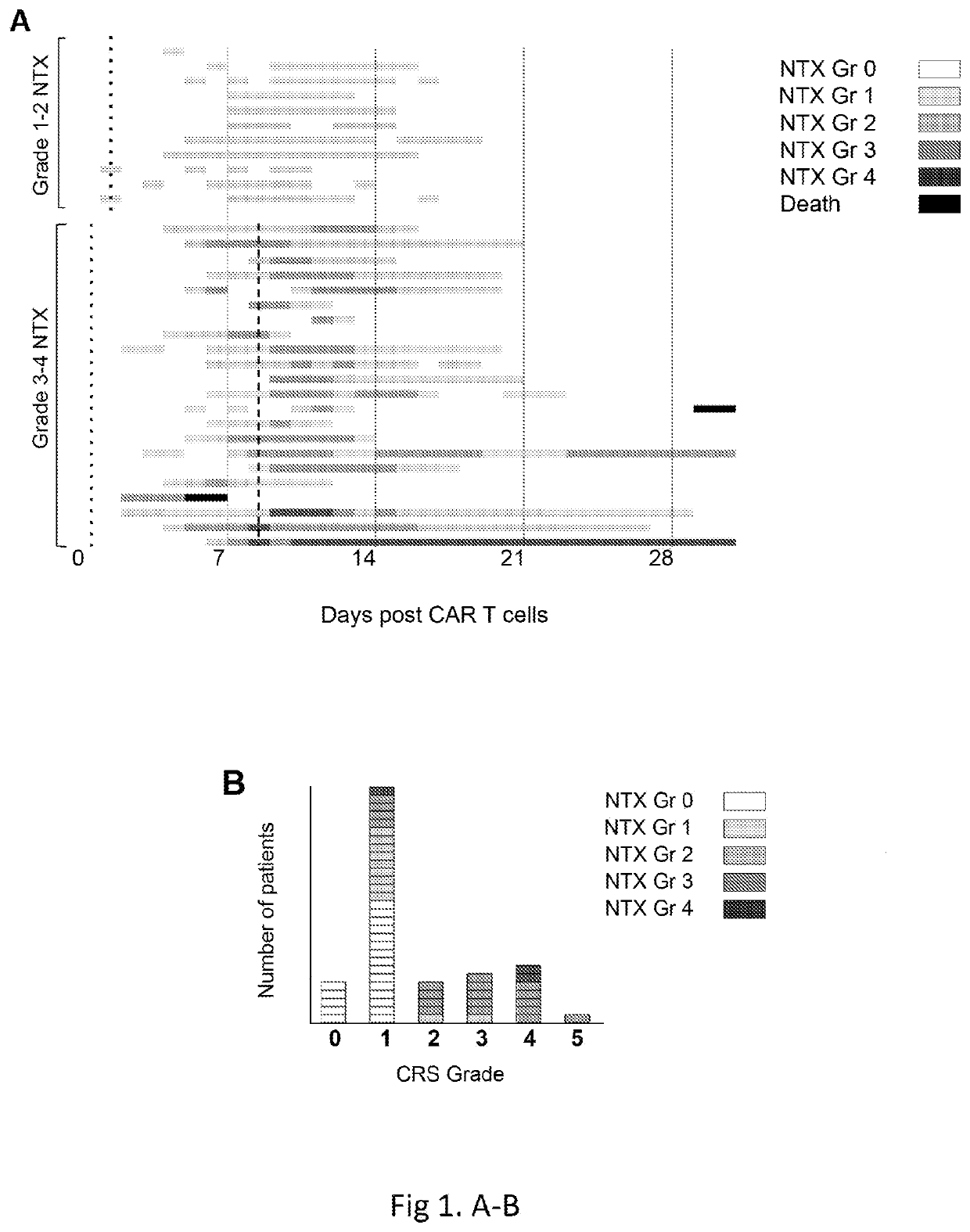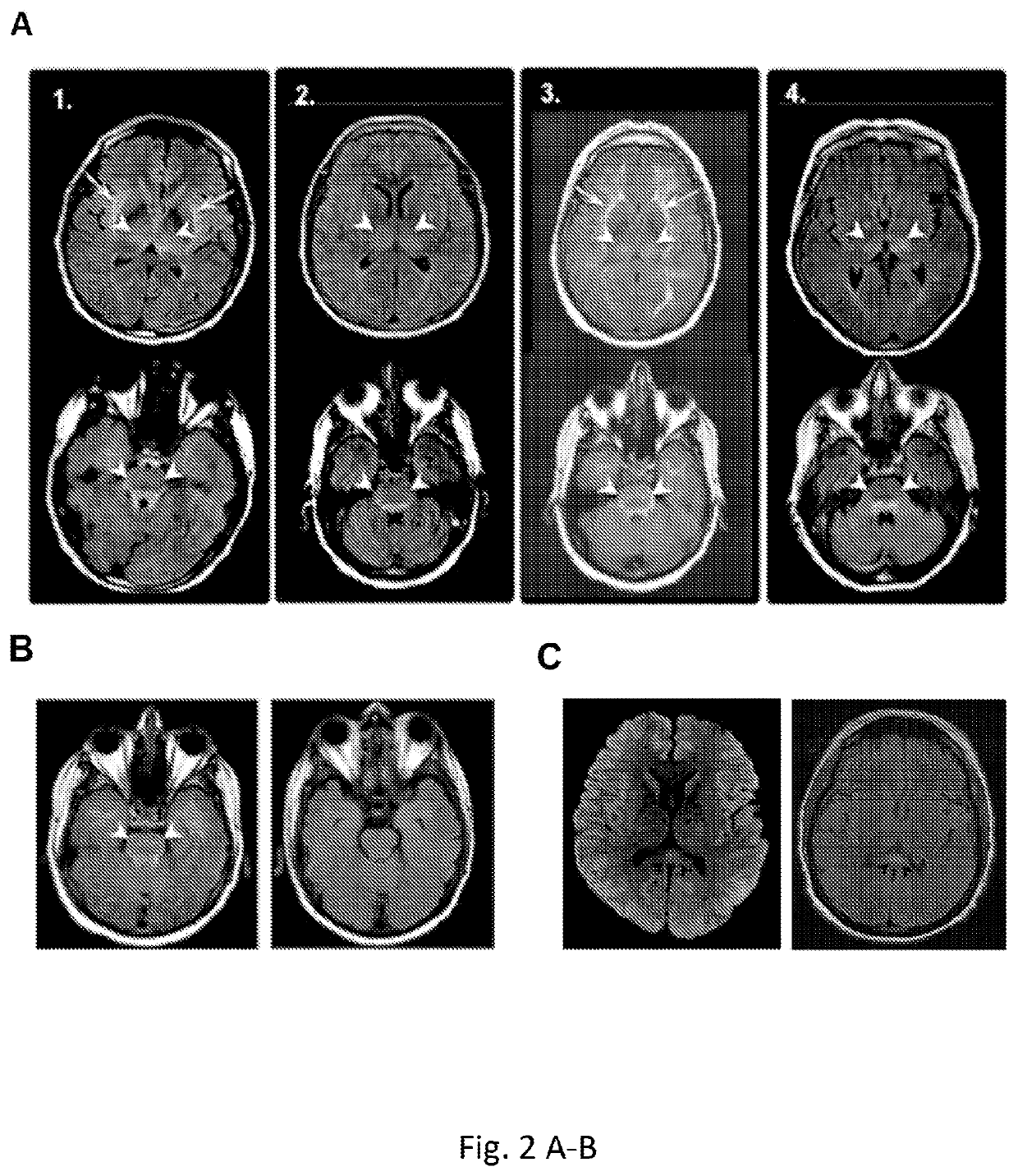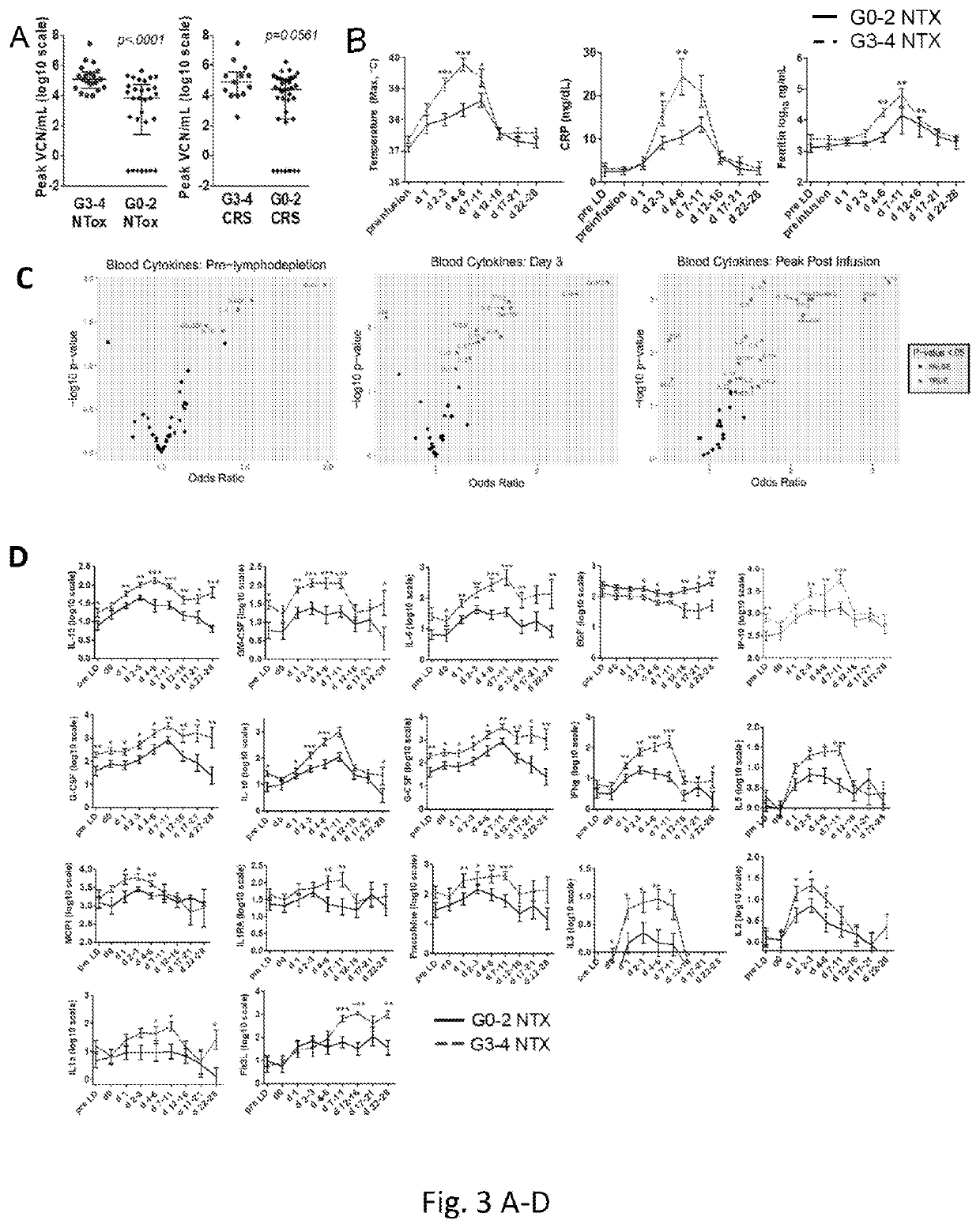Diagnosis and treatment of immunotherapy-induced neurotoxicity
- Summary
- Abstract
- Description
- Claims
- Application Information
AI Technical Summary
Benefits of technology
Problems solved by technology
Method used
Image
Examples
example 3
Pre-Clinical Testing in Mice & Human Clinical Trials
[0161]The efficacy of the various active agents described in this patent disclosure in treating and / or preventing neurotoxicity is tested using a humanized NSG mouse model (the Jackson Laboratory) based on the NOD scid gamma mouse (also from the Jackson Laboratory).
[0162]Briefly, newborn NSG mice (10 mice per treatment group or control group) are injected with human cord blood CD34+ cells. At 4 weeks of age, the mice are injected intravenously with 106 Raji cells. (a human Burkitt's lymphoma cell line, ATCC). Upon Raji cell engraftment (about 7 days post-injection), or at a given time thereafter, all mice (in treatment and control groups) receive a single intravenous dose of 107 human CD19-directed CAR-T cells. The day of the CAR-T cells injection is considered “day 0”.
[0163]Treatment groups receive a daily injection of a given test agent at a given dose commencing on a given day following CAR-T cell administration. For each given ...
example 1
REFERENCE LIST FOR BACKGROUND AND EXAMPLE 1
[0168]1. Brentjens R J, Davila M L, Riviere I, Park J, Wang X, Cowell L G, et al. CD19-targeted T cells rapidly induce molecular remissions in adults with chemotherapy-refractory acute lymphoblastic leukemia. Sci Transl Med. 2013; 5:177ra38.[0169]2. Park J H, Geyer M B, Brentjens R J. CD19-targeted CAR T-cell therapeutics for hematologic malignancies: interpreting clinical outcomes to date. Blood. 2016; 127:3312-20.[0170]3. Maude S L, Frey N, Shaw P A, Aplenc R, Barrett D M, Bunin N J, et al. Chimeric antigen receptor T cells for sustained remissions in leukemia. N Engl J Med. 2014; 371:1507-17.[0171]4. Turtle C J, Hanafi L A, Berger C, Gooley T A, Cherian S, Hudecek M, et al. CD19 CAR-T cells of defined CD4+:CD8+ composition in adult B cell ALL patients. J Clin Invest.[0172]2016; 126:2123-38.[0173]5. Lee D W, Kochenderfer J N, Stetler-Stevenson M, Cui Y K, Delbrook C, Feldman S A, et al. T cells expressing CD19 chimeric antigen receptors f...
example 2
REFERENCE LIST FOR EXAMPLE 2
[0219]1. Neelapu, S. S. et al. Chimeric antigen receptor T-cell therapy—assessment and management of toxicities. Nat Rev Clin Oncol 15, 47-62 (2018).[0220]2. June, C. H., O'Connor, R. S., Kawalekar, O. U., Ghassemi, S. & Milone, M. C. CAR T cell immunotherapy for human cancer. Science 359, 1361-1365 (2018).[0221]3. Topp, M. S. et al. Safety and activity of blinatumomab for adult patients with relapsed or refractory B-precursor acute lymphoblastic leukaemia: a multicentre, single-arm, phase 2 study. Lancet Oncol 16, 57-66 (2015).[0222]4. Teachey, D. T. et al. Cytokine release syndrome after blinatumomab treatment related to abnormal macrophage activation and ameliorated with cytokine-directed therapy. Blood 121, 5154-7 (2013).[0223]5. Cuzzubbo, S. et al. Neurological adverse events associated with immune checkpoint inhibitors: Review of the literature. Eur J Cancer 73, 1-8 (2017).[0224]6. Bonifant, C. L., Jackson, H. J., Brentjens, R. J. & Curran, K. J. To...
PUM
| Property | Measurement | Unit |
|---|---|---|
| Fraction | aaaaa | aaaaa |
| Fraction | aaaaa | aaaaa |
| Fraction | aaaaa | aaaaa |
Abstract
Description
Claims
Application Information
 Login to View More
Login to View More - R&D
- Intellectual Property
- Life Sciences
- Materials
- Tech Scout
- Unparalleled Data Quality
- Higher Quality Content
- 60% Fewer Hallucinations
Browse by: Latest US Patents, China's latest patents, Technical Efficacy Thesaurus, Application Domain, Technology Topic, Popular Technical Reports.
© 2025 PatSnap. All rights reserved.Legal|Privacy policy|Modern Slavery Act Transparency Statement|Sitemap|About US| Contact US: help@patsnap.com



